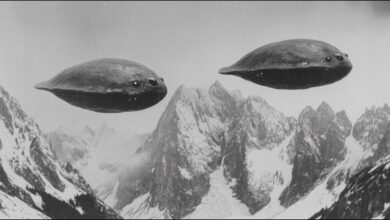Europe’s (Highly Debated) Prehistoric Plague

In the 1970s and 1980s, archaeologists and cave explorers in England excavated at **Charterhouse Warren** in Somerset, a 21-metre-deep pit with two chambers at the bottom. They found Roman and Iron Age artifacts, ancient auroch bones, and the bodies of at least 30 people who lived 4,000 years ago. Many of the injuries showed that they may have been thrown into the pit.
A notable discovery was that at least two of the individuals were infected with **Yersinia pestis**, the bacteria that causes bubonic plague (also known as the Black Death). The team took 30 teeth from the cave and found two positive.
The plague appeared during a crucial transition from the Neolithic to the Bronze Age in Europe, when major cultural and demographic changes took place. During the Neolithic period, humans lived mainly in small farming villages, growing barley, peas, wheat and raising cattle, starting in Mesopotamia 12,000 years ago and spreading across Europe, reaching Britain around 6,000 years ago.
Around 4,300 years ago, these communities dwindled and a new culture emerged called the **Beaker culture**, characterized by metal artifacts and individual rather than communal burials. For example, the **Amesbury Archer**, a man buried near Stonehenge, originated from the Alps (Germany, Austria or Switzerland).
Thanks to genetic research, scientists have confirmed that the transition from the Neolithic to the Bronze Age was not just a cultural change but also a complete population replacement, with migrants from the **Eurasian steppe** (modern-day Ukraine and Russia).

In the plague study, in addition to Charterhouse Warren, samples were collected from another site in **Levens Park** (Northern England) with four individuals buried. One of these, an adult female, also tested positive for Yersinia pestis. In total, from 34 samples tested at the two sites, only three were positive. However, this number is still significant because archaea are notoriously difficult to preserve and analyse.
This study opens up the question of whether plague played a role in the collapse of Neolithic communities and the transition to the Bronze Age.
Frederik used large samples from nearby graves to reconstruct family relationships, helping to understand how the disease spread through the community. The surprising results showed that many of the people in the graves were related by blood, confirming that Neolithic society was patrilineal: males had a clear father-son-grandchild relationship, while females were “imported” from elsewhere. One interesting case was the discovery of a woman’s full brother buried 7km away.
The genealogical analysis also helped Frederik identify three outbreaks of plague in 120 years. The first two were relatively small, but the third was widespread and caused great losses. Genetic traces showed that the same strain of plague appeared in many individuals, proving that it spread rapidly without mutating.
A notable phenomenon was “gene rearrangement” in the YPN region, which increased the virulence of the disease, identified in the final outbreaks. This made the plague more deadly in the late Neolithic, just as the society was in decline.
Based on the evidence, Neolithic plague strains were the ancestors of Bronze Age plague strains, separated by about 500 years of evolution. However, it is not clear that the plague was the main cause of the decline of Neolithic societies. Frederik stressed that more samples would be needed to draw a more definitive conclusion.
Neolithic plague may not have been as deadly as medieval plague, but the DNA found in teeth suggests that the bacteria had entered the bloodstream, which is often fatal. One question is why the plague did not have the same effect on Bronze Age people, perhaps because they had some immunity.








